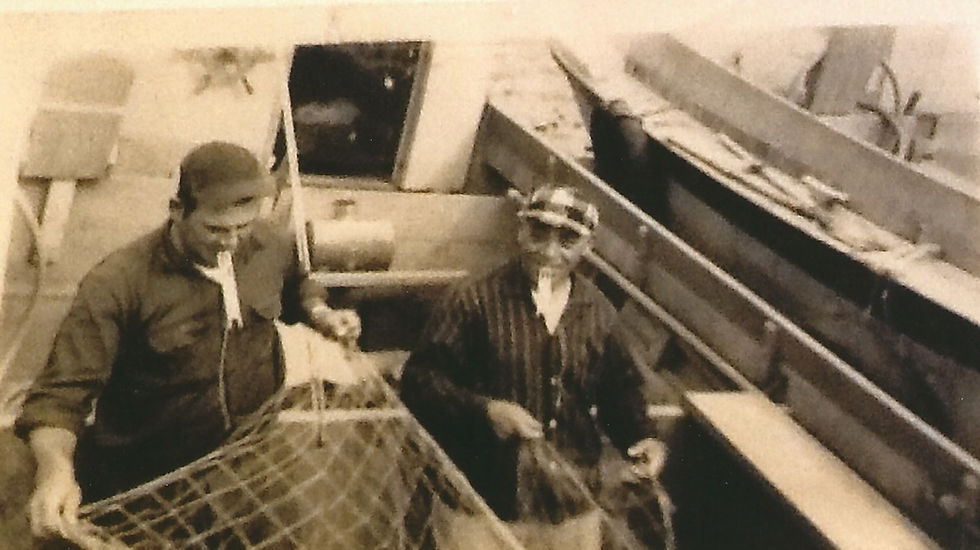Gill, Lampara and Seine Nets: A Day in the Life of a Fisherman
- Mike Ventimiglia
- Mar 16, 2021
- 3 min read

The mending and repair of fishing nets is an art form, a special skill which takes time to learn. We will take a look at three types of fishing nets that were used to fish the waters of Monterey Bay. Anthony Castaldo (left) alongside an unknown crew member, is mending a fishing net. Both men are holding the mending needles in their mouths as they search through the net for holes that need to be repaired. It was essential that all holes be
mended, as a small hole could cost them their entire catch. Gill Net – Gill nets are commonly used by commercial fisherman of the oceans. Fish will swim into the netting and pass only part of the way through the mesh. When they struggle to get free, the twine will slip behind the gill cover and prevent escape – they are then caught in the gill net. The mesh size, depth and length of the gill net is tailored the species of fish that you want to catch. A lampara net is a type of fishing net. It is a surrounding net having the shape of a spoon or a dustpan with a short lead line under a longer float line. The net has a central bunt to contain the fish and two lateral wings. Lampara nets are used for capturing pelagic fish, those swimming near the water's surface. They are often used in the Mediterranean, the United States, and South Africa to catch sardines. California became successful after Italian immigrants introduced the lampara net there in 1905. These nets are often utilized on fishing vessels 9 to 18 meters long with 50 to 150 horsepower engines. The nets are hauled in by hand by a team of crew members pulling the lateral wings. The fish are removed with a smaller net or a scoop.
Seine Net – Seine Nets hang vertically in the water with the bottom edge weighted down along the bottom edge, and float across the top so the net will hang upright in the water. They are woven typically from twine or rope with mesh openings the size of the fish you want to catch. The ends are drawn together to encircle and catch the fish. Great for use in fresh or salt water and most can be deployed by boat or land.
The lampara boat was replaced by the half ring boat, which modifications to the net and the installation of a winch, normally located behind the wheelhouse, allowed hydraulic power to close the net capturing the fish.
Purse seine nets were used for sardines when mending the net it is usually laid out in a flat area so the crew can see the the tears and mend the net.
Early foul weather rain gear used by fisherman in the early years was made of a heavy canvas oil cloth, which in cool weather made it difficult to move about, let alone pull in fishing nets.
In the 1939 fishing season the New Rex owned by Mariano Torrente filled the hold with sardines and what they could not fit into the hold was spread over the deck. It was estimated that this days catch was 144 tons. The crew is exhausted, but still had to unload the catch at the canneries hopper.
In 1919 boats would tie up at wharf #1 and a scoop net would be lowered so the days catch could be hauled up and weighed at the fish market. In later years the canneries had hoppers in the bay where the boats would off load the fish and the fish would vacuum up to the cannery.
On February 27, 1927 was a proud moment for the Sicilian fishermen, who came together only 15 months earlier and united, forming the Monterey’s Fisherman’s Protective Union,. The unionization was a giant step for migrant fishermen.

Comentários